
Fundamentals
The delicate balance within our bodies profoundly influences every aspect of our being, including the very strands that adorn our crowns. When we speak of Hormonal Influence, we are gently acknowledging the profound impact of these intricate chemical messengers on the life cycle and well-being of our hair. Think of hormones as whispers carrying vital instructions throughout your system, guiding processes from growth to rest. For textured hair, this conversation between hormones and follicles holds particular significance, shaping its strength, vibrancy, and unique characteristics.
At its simplest, the Hormonal Influence on hair describes how the body’s endocrine system—a network of glands producing hormones—orchestrates changes in hair growth, density, and even texture. These biological signals travel through the bloodstream, reaching hair follicles nestled within the scalp and skin. Each follicle possesses specific receptors, acting like tiny locks waiting for the right hormonal key.
Once unlocked, these hormones initiate a cascade of events, influencing the hair’s journey through its distinct phases of growth, transition, and rest. This constant dialogue ensures hair responds to the body’s changing needs and rhythms.
Understanding this fundamental connection allows us to appreciate why our hair might feel different during various life stages or in response to internal shifts. It’s a gentle reminder that hair is not merely an external adornment but a living part of our biological narrative, deeply connected to our internal landscape.
Hormonal Influence refers to the subtle yet significant ways our body’s chemical messengers guide the health and appearance of our hair.
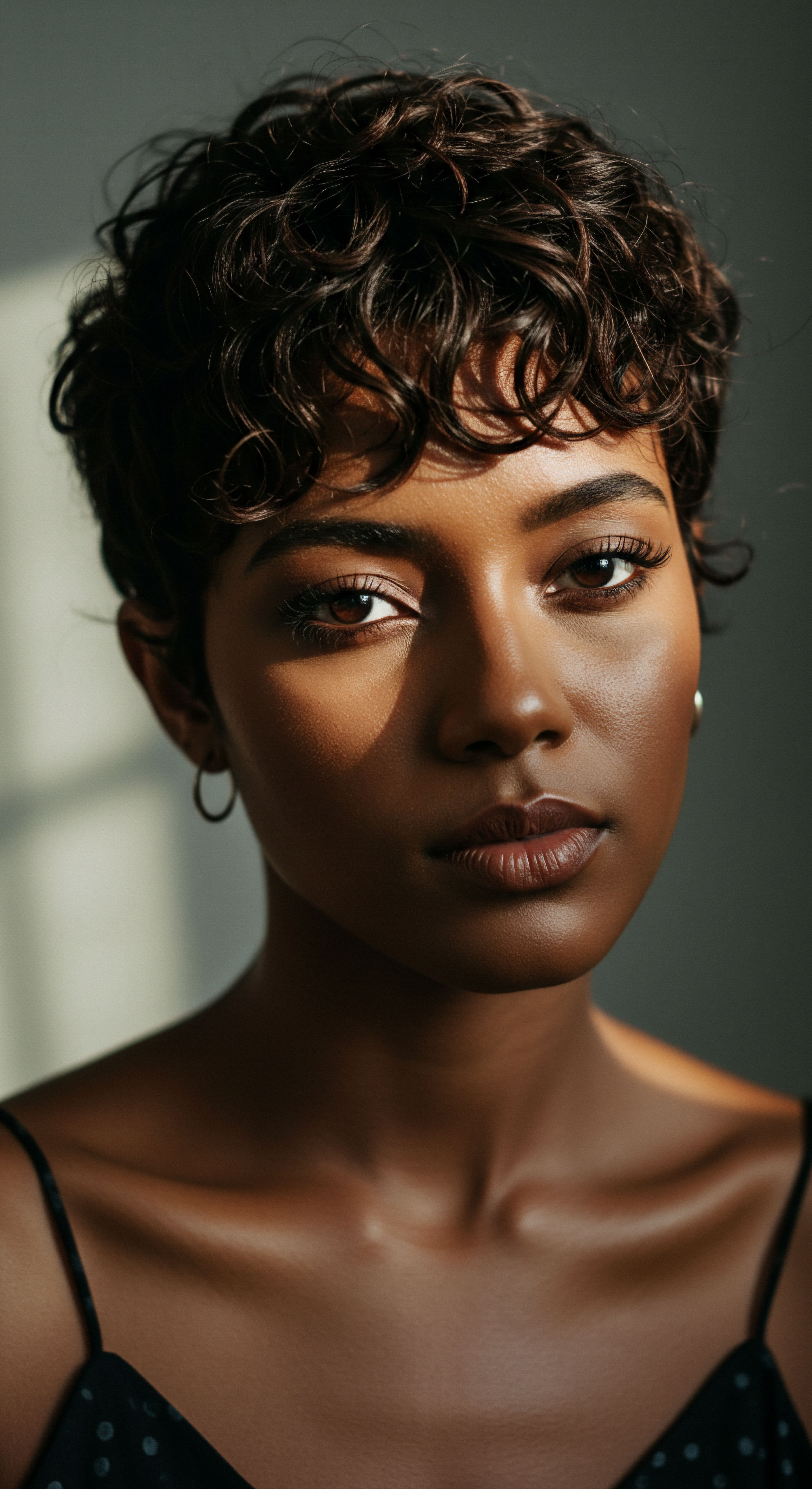
Key Hormones and Their Hair Connection
Several key players in the hormonal symphony hold sway over our hair’s destiny. These include a range of chemical compounds, each with its own specific meaning and effect on hair follicles.
- Androgens ❉ Often associated with characteristics typically observed in males, hormones such as testosterone and its potent derivative, dihydrotestosterone (DHT), play a central role in hair biology. While they stimulate growth in certain body areas, they can, paradoxically, contribute to hair thinning on the scalp in genetically predisposed individuals.
- Estrogens ❉ These hormones, more prominent in individuals assigned female at birth, are generally considered hair-friendly. They tend to prolong the active growth phase of hair, leading to fuller, longer strands. Fluctuations in estrogen levels can markedly alter hair density and growth patterns.
- Thyroid Hormones ❉ Regulators of metabolism, thyroid hormones (T3 and T4) are essential for overall cellular function, including the energy demands of hair follicles. Both an underactive (hypothyroidism) and overactive (hyperthyroidism) thyroid can disrupt the hair growth cycle, resulting in noticeable changes to hair health.
- Cortisol ❉ Known as the “stress hormone,” cortisol’s chronic elevation can signal the body to prioritize vital functions over hair growth, potentially leading to increased shedding. This hormone’s impact on hair follicle activity is an area of ongoing study.

Intermediate
Moving beyond the foundational explanation, the Hormonal Influence becomes a more tangible concept when we observe its manifestations across life’s unfolding chapters. The hair, particularly textured strands with their unique structural needs, often responds visibly to these internal shifts, prompting us to adjust our care rituals and deepen our understanding.
Consider the journey from adolescence through adulthood ❉
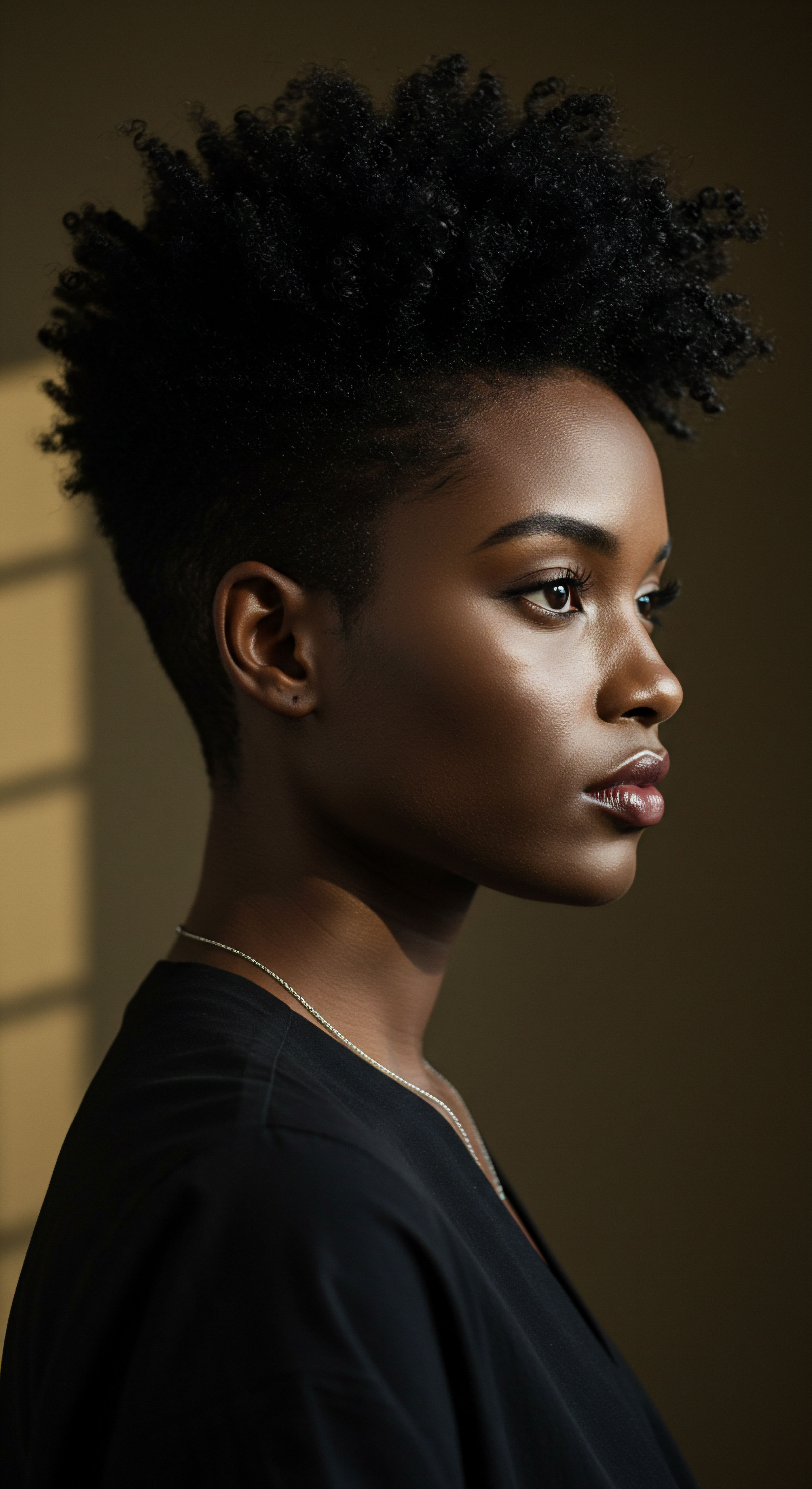
Life’s Rhythms and Hair’s Responses
The hormonal shifts accompanying significant life stages paint a vivid picture of this influence. Puberty, for instance, introduces a surge of hormones, often leading to increased oil production on the scalp and sometimes a change in hair texture. For many, this period marks the transition from finer childhood hair to more robust adult strands.
Pregnancy presents a remarkable illustration of hormonal effects. Elevated estrogen and progesterone levels during gestation can extend the hair’s active growth phase, often resulting in an enviable period of fuller, thicker hair. This enhanced vitality is a testament to the supportive role these hormones can play.
However, the dramatic drop in these hormones postpartum frequently triggers a significant shedding phase, known as telogen effluvium, as hair follicles transition rapidly into a resting state. This experience, while often distressing, represents a natural rebalancing of the body’s systems.
Hair’s evolving nature throughout life often mirrors the ebb and flow of our internal hormonal landscape.
Later in life, menopause ushers in another wave of hormonal change. As estrogen levels decline, the influence of androgens can become more pronounced, potentially leading to thinning hair, a reduction in overall hair volume, and even changes in texture, such as increased brittleness. Recognizing these patterns helps us approach hair care with greater empathy and strategic adjustment, supporting our strands through every phase.

Daily Care Through a Hormonal Lens
Understanding the subtle shifts driven by hormonal rhythms can inform our daily and weekly hair care practices. If you notice increased oiliness during certain phases of your menstrual cycle, for instance, a gentle clarifying shampoo might be beneficial. Periods of increased shedding might prompt a focus on scalp massage to stimulate circulation or incorporating nutrient-rich treatments to support follicle health.
For textured hair, which often requires specific moisture and detangling approaches, recognizing hormonal influences means adapting routines to maintain elasticity and prevent breakage. For example, if hormonal changes lead to drier strands, increasing deep conditioning treatments or utilizing humectant-rich products becomes even more crucial.
| Hormonal Stage Puberty |
| Primary Hormonal Shift Increase in androgens and estrogens |
| Common Hair Observations Increased scalp oil, potential texture changes, new hair growth. |
| Hormonal Stage Pregnancy |
| Primary Hormonal Shift Elevated estrogen and progesterone |
| Common Hair Observations Fuller, thicker hair, reduced shedding. |
| Hormonal Stage Postpartum |
| Primary Hormonal Shift Rapid drop in estrogen |
| Common Hair Observations Significant shedding (telogen effluvium). |
| Hormonal Stage Menopause |
| Primary Hormonal Shift Declining estrogen, relatively higher androgen influence |
| Common Hair Observations Thinning, reduced density, changes in texture (e.g. brittleness). |
| Hormonal Stage These observations highlight the body's dynamic interplay between hormones and hair health. |

Advanced
The Hormonal Influence, in its most profound and scholarly interpretation, signifies the intricate biochemical governance exerted by endogenous signaling molecules upon the pilosebaceous unit—the hair follicle, its associated sebaceous gland, and arrector pili muscle. This biological regulation extends beyond mere growth modulation; it encompasses the precise timing of hair cycle phases, the determination of hair shaft diameter, pigmentation, and even the hair’s inherent structural integrity. It represents a sophisticated endocrine dialogue that shapes not only the presence but the very character of each strand, with specific and often amplified implications for textured hair phenotypes. The meaning of this influence is deeply rooted in the cellular and molecular machinery within the hair follicle, where receptors for various hormones act as critical intermediaries, translating systemic signals into localized follicular responses.
This complex system is a testament to the body’s remarkable adaptability, yet it also presents vulnerabilities, particularly for individuals with textured hair, whose follicles possess unique geometries and biochemical sensitivities. The hair follicle, a miniature organ, undergoes cyclical regeneration, meticulously transitioning through anagen (growth), catagen (regression), and telogen (rest) phases. Hormones serve as master conductors of this cycle. Androgens, such as dihydrotestosterone (DHT), exert a paradoxical dual effect ❉ promoting terminal hair growth in certain body regions while inducing miniaturization of scalp follicles in those genetically predisposed to pattern hair loss.
This miniaturization process shortens the anagen phase and prolongs the telogen phase, leading to finer, shorter, and eventually absent strands. Estrogens, conversely, generally extend the anagen phase, fostering robust growth. The balance between these opposing forces, coupled with the individual follicle’s sensitivity to these hormones, dictates the observable hair phenotype.
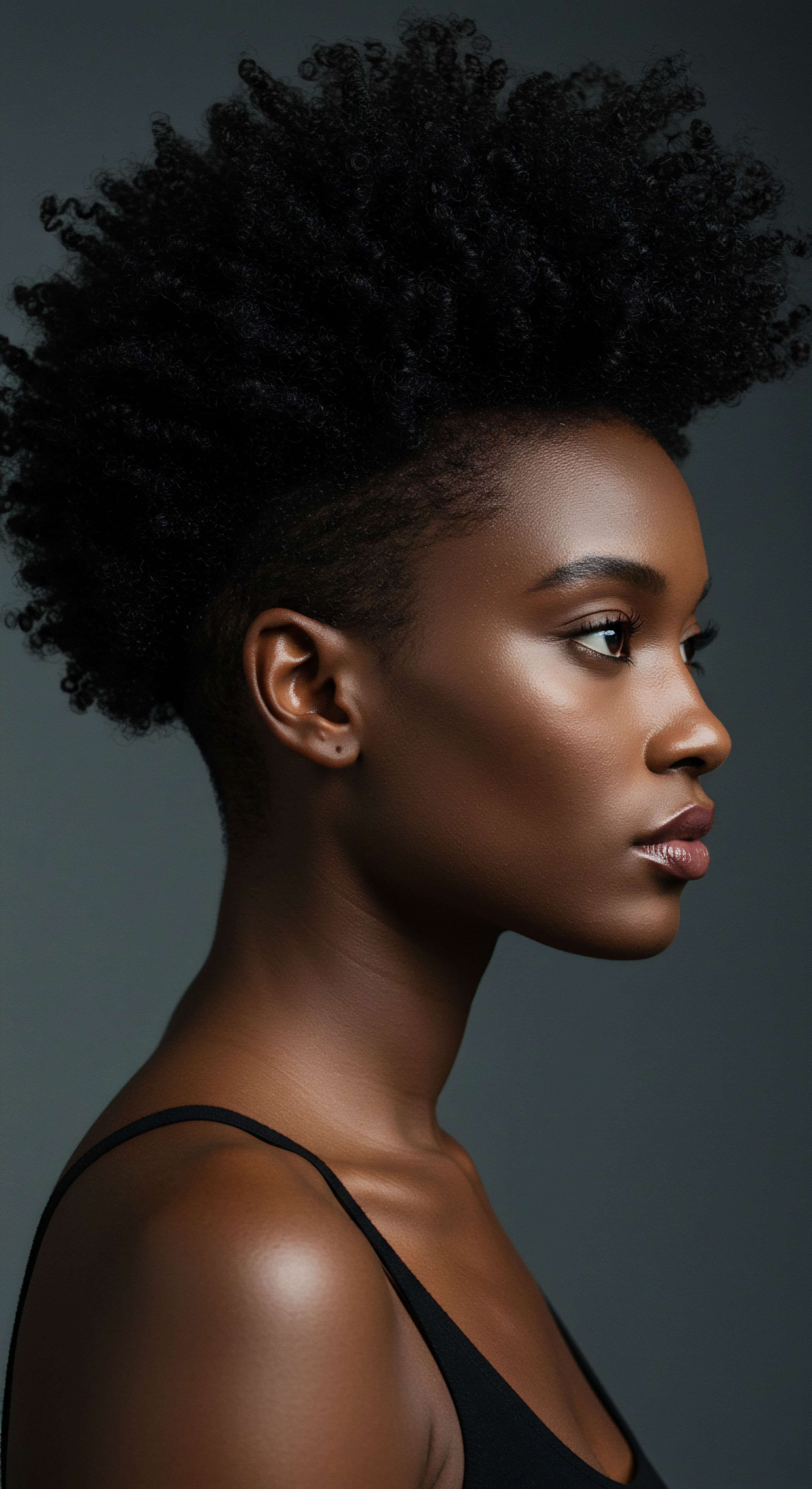
The Intricacies of Follicular Response
The responsiveness of hair follicles to hormonal cues is not uniform across all individuals or even all areas of the scalp. Genetic predispositions play a significant role, determining the density of androgen receptors within dermal papilla cells and the activity of enzymes like 5-alpha reductase, which converts testosterone to the more potent DHT. This explains why some individuals experience pattern hair loss despite seemingly normal circulating hormone levels; their follicles are simply more sensitive to androgenic signals.
Thyroid hormones (T3 and T4) are indispensable for metabolic activity within hair follicles, influencing keratinocyte proliferation and pigmentation. Disruptions, whether hypothyroid or hyperthyroid, can lead to diffuse hair thinning, altered texture, and compromised hair quality.
The hair follicle’s response to hormonal signals is a symphony of genetic and biochemical interactions, profoundly shaping hair’s health and appearance.
<
Beyond the commonly recognized sex and thyroid hormones, other endocrine players contribute to this intricate network. Prolactin, often associated with lactation, has receptors in human scalp skin and can influence the hair cycle. Even growth hormone (GH) interacts with hair follicles, with imbalances potentially leading to hypertrichosis or hair loss.

Hormonal Dysregulation and Textured Hair ❉ A Deeper Examination
For individuals with textured hair, particularly those of Black or mixed heritage, the impact of hormonal dysregulation can manifest with unique complexities, often intersecting with genetic predispositions and cultural styling practices. Polycystic Ovary Syndrome (PCOS), a common endocrine disorder characterized by elevated androgen levels, presents a compelling example. While hirsutism (excessive body or facial hair growth) is a known symptom of PCOS, affecting over 70% of those with hyperandrogenemia, thinning of scalp hair mimicking male pattern baldness is also a frequent concern.
A particularly insightful, perhaps controversial, data point highlights the intersection of hormonal influence, systemic stress, and racial disparities in hair health. Research indicates that Black Women Display Elevated Hair Cortisol Concentrations (HCC) Compared to Other Racial Groups, and Perceived Discrimination is Positively Associated with Higher HCC among Black Women but Not White Women. Cortisol, the primary stress hormone, when chronically elevated, can accelerate the degradation of vital skin elements like hyaluronan and proteoglycans, impacting the hair follicle’s cyclic regulation and potentially inducing a premature shift into the resting phase (telogen effluvium). This means that beyond genetic predispositions or direct hormonal imbalances like PCOS, the pervasive experience of systemic stressors, including racial discrimination, can translate into a tangible, measurable hormonal impact on hair health for Black women. This offers a powerful elucidation of how lived experiences can manifest biologically, contributing to hair concerns that are often dismissed or misattributed.
This context is further compounded by findings that Black and African-Caribbean women are more likely to use hair products containing hormonally active chemicals, such as endocrine disruptors, compared to White women. While direct causal links to specific hair loss conditions require further research, the potential for cumulative exposure to exogenous hormonal influencers, alongside endogenous fluctuations and chronic stress, paints a comprehensive picture of the challenges faced by this community in maintaining optimal hair health. The implications here are not just about hair; they speak to broader systemic inequities impacting wellness.
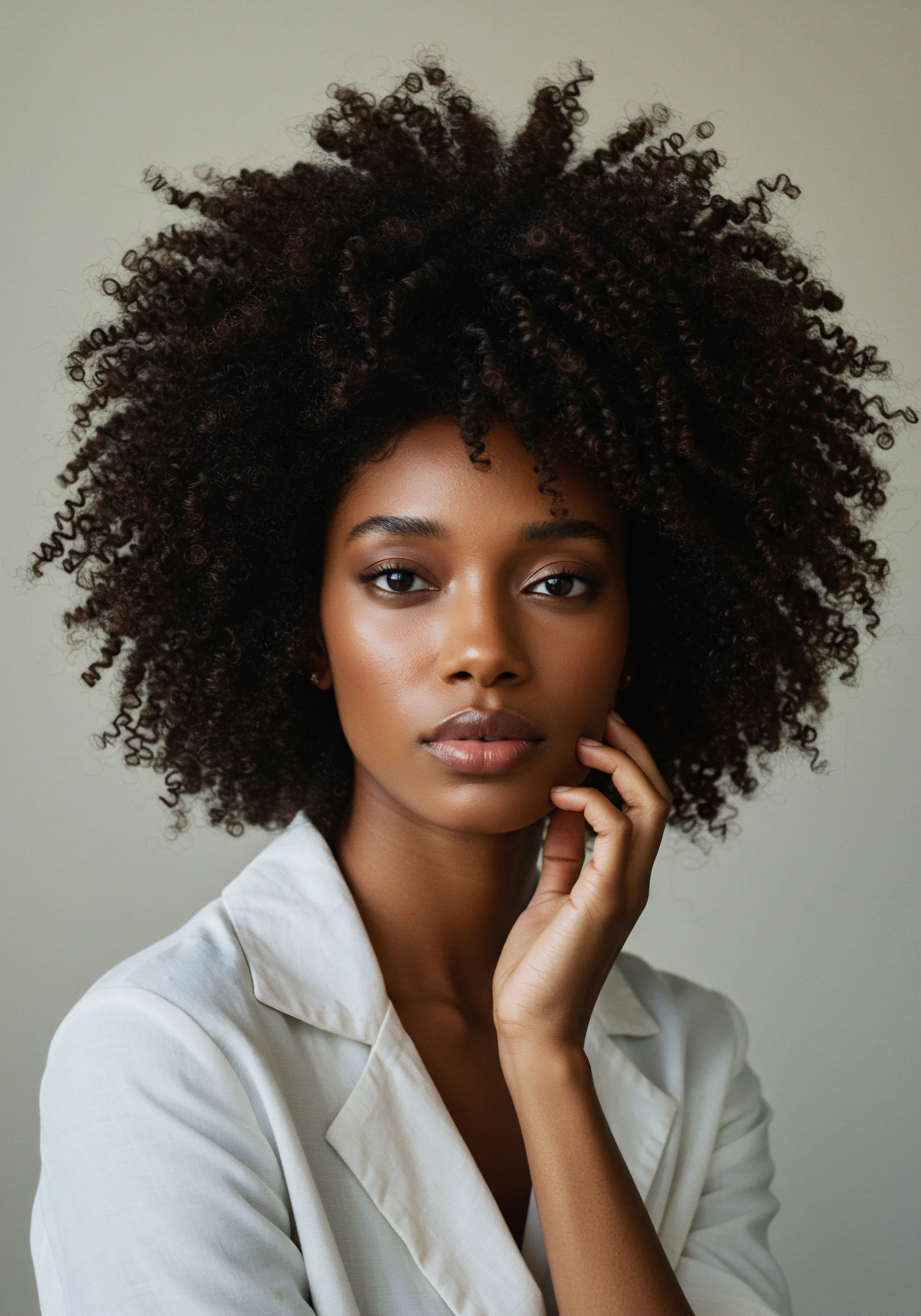
Complexities in Hair Loss Presentations
Female Pattern Hair Loss (FPHL), or androgenetic alopecia, often presents as a gradual thinning at the crown and widening of the central part. While androgens are implicated, the exact interplay of genetics and hormones in FPHL is still being explored, particularly as many women with FPHL have normal androgen levels. For Black women, FPHL can sometimes be masked or exacerbated by other prevalent conditions like Central Centrifugal Cicatricial Alopecia (CCCA), a scarring alopecia, or traction alopecia, caused by chronic tension from styling. The interaction between these mechanically induced hair loss patterns and underlying hormonal sensitivities adds another layer of complexity to diagnosis and treatment.
Understanding the full import of Hormonal Influence requires a multi-lens perspective, integrating molecular biology, clinical observation, and the socio-cultural contexts that shape individual hair journeys. The long-term consequences of unaddressed hormonal imbalances or chronic stress can include progressive hair thinning, compromised hair shaft quality, and significant psychological distress. From an expert perspective, successful interventions necessitate not only targeted hormonal therapies where appropriate but also a holistic appreciation of an individual’s unique biological, environmental, and experiential factors. This nuanced understanding represents the frontier of truly effective and compassionate textured hair care.
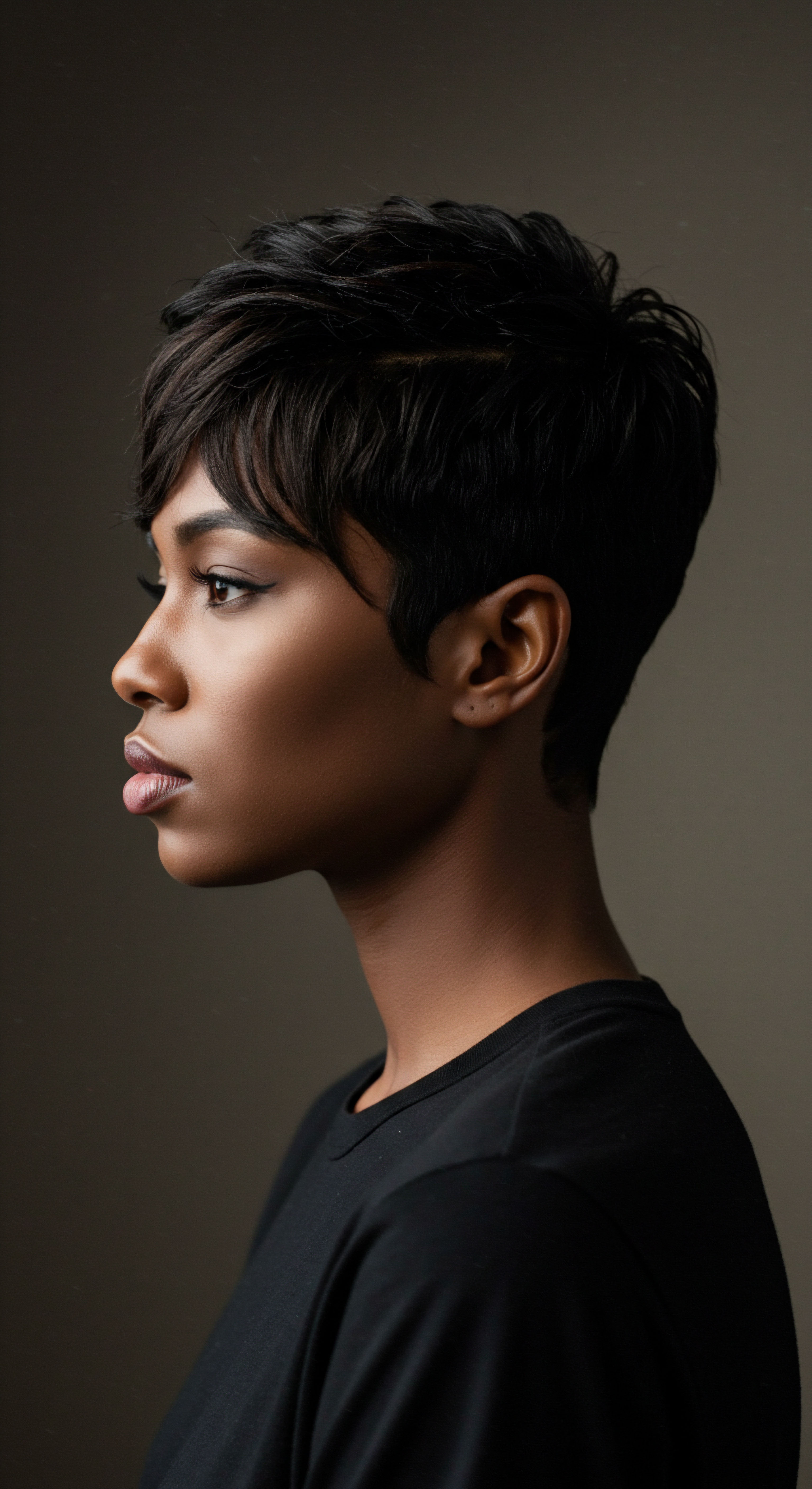
Reflection
As we draw our thoughts together on the profound influence of hormones on our hair, especially for those with textured strands, a sense of deep respect for the body’s inner workings settles upon us. Our hair, a vibrant expression of identity and heritage, dances to the rhythm of unseen messengers, a testament to the intimate connection between our inner vitality and outer beauty. Understanding this intricate dialogue invites a gentle curiosity, encouraging us to listen more closely to our bodies and to approach our hair care with thoughtful intention rather than fleeting trends.
The journey of textured hair is rich with stories of resilience, adaptation, and beauty. Recognizing the hormonal currents that shape its path offers a powerful tool for personalized care, empowering us to nourish our strands from within and without. This knowledge becomes a guiding light, helping us navigate changes with grace and confidence, always celebrating the unique crown we wear.
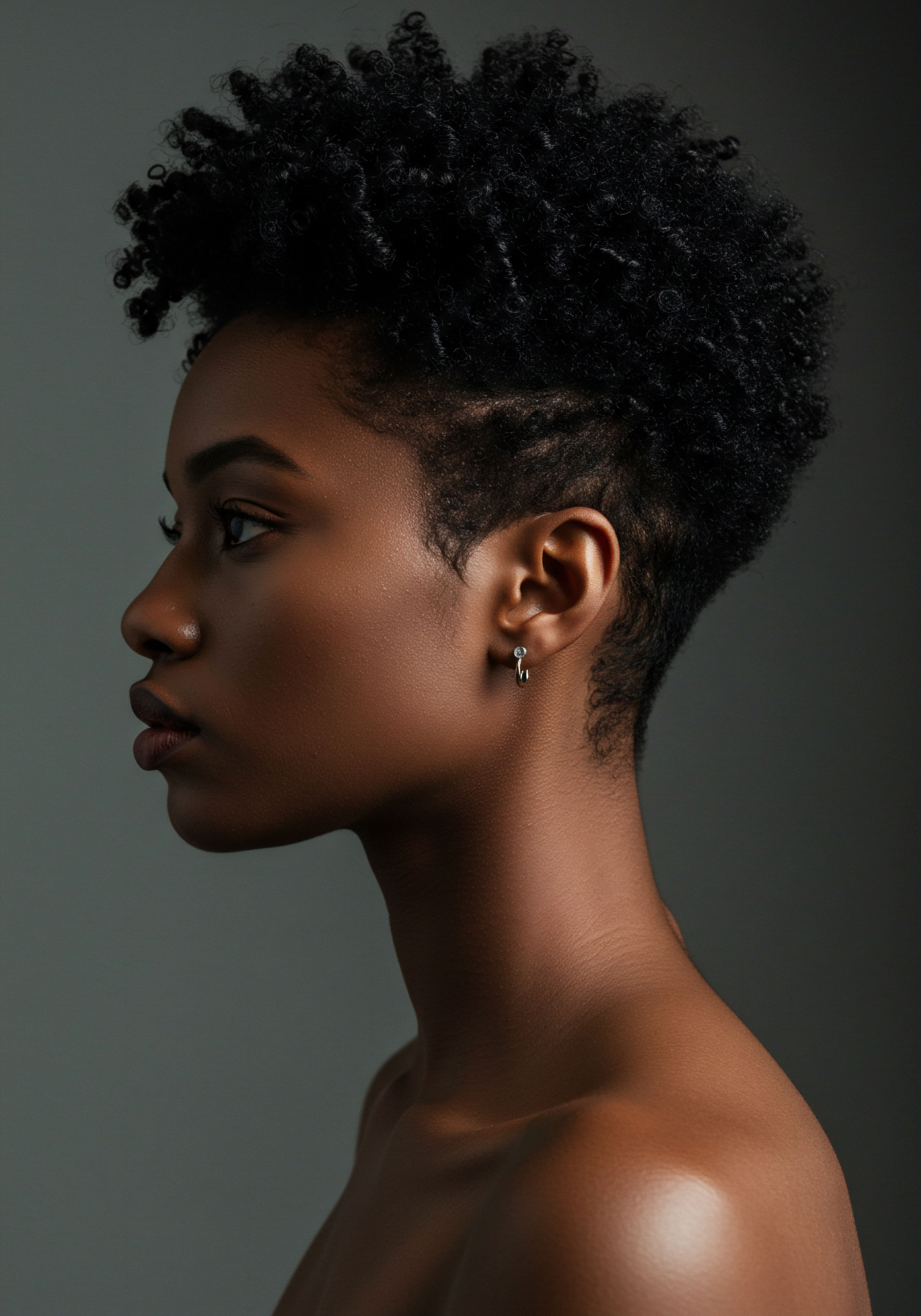
References
- Grymowicz, M. et al. (2020). Hormonal Effects on Hair Follicles. International Journal of Molecular Sciences, 21(15), 5342.
- Randall, V. A. (2007). Hormonal regulation of hair follicles exhibits a biological paradox. Seminars in Cell & Developmental Biology, 18(2), 274-285.
- Olsson Scandinavia. (2024). Do hormones impact hair strength and growth? Retrieved from Olsson Scandinavia website.
- MSD Manual Consumer Version. (n.d.). Alopecia (Hair Loss) – Skin Disorders. Retrieved from MSD Manual website.
- WeKind London. (2024). Hormonal Hair Changes. Retrieved from WeKind London website.
- EsteNove. (2024). What Is Best Hair Loss Treatment For Black Women? Retrieved from EsteNove website.
- Ziering Medical. (2025). Hormones Out of Balance ❉ How They Impact Your Hair Health and What You Can Do About It. Retrieved from Ziering Medical website.
- HealthCentral. (2020). Why PCOS Affects Women of Color Differently. Retrieved from HealthCentral website.
- Limoges Beauty. (n.d.). Hair Follicle Sensitivity. Retrieved from Limoges Beauty website.
- Menopause Care. (2025). HRT & Hair Loss ❉ Can It Help? Retrieved from Menopause Care website.
- Lonerock Clinic. (2025). How Do Hormones Influence Women’s Hair Growth? Retrieved from Lonerock Clinic website.
- Wimpole Clinic. (n.d.). Afro Hair ❉ Types, Haircare, Hair Loss Advice. Retrieved from Wimpole Clinic website.
- Ohnemus, U. et al. (2006). Hair Follicle as an Estrogen Target and Source. Endocrine Reviews, 27(6), 677-706.
- American Society for Reproductive Medicine. (2015). Hirsutism and Polycystic Ovary Syndrome (PCOS) patient education booklet. ReproductiveFacts.org.
- Ominira Naturals. (2025). The Silent Killer of Hair Growth (What Black Women MUST Know!). YouTube video.
- Medanta Hospital. (2023). PCOS Symptoms Vary among black and white women. Retrieved from Medanta Hospital website.
- Trichology. (2024). Hormones’ Impact on Hair Health ❉ Recent Discoveries and Case Studies. Retrieved from Trichology website.
- Goren, A. et al. (2016). Integrative and Mechanistic Approach to the Hair Growth Cycle and Hair Loss. Journal of Clinical & Aesthetic Dermatology, 9(1), 1001-1004.
- Resilient Sisterhood Project. (n.d.). Black Women and PCOS. Retrieved from Resilient Sisterhood Project website.
- Messenger, A. G. & Rundegren, J. (2003). Molecular Genetic and Endocrine Mechanisms of Hair Growth. Dermatology, 206(2), 114-122.
- Johns Hopkins Medicine. (n.d.). Hair Loss in Black Women ❉ Tips from an Expert. Retrieved from Johns Hopkins Medicine website.
- American Academy of Dermatology. (2016). Survey ❉ Almost half of African-American women have experienced hair loss. ScienceDaily.
- Peters, E. M. J. et al. (2016). Stress and the Hair Growth Cycle ❉ Cortisol-Induced Hair Growth Disruption. Journal of Drugs in Dermatology, 15(8), 1001-1004.
- Dr Cinik. (n.d.). Thyroid and Hair Loss ❉ Causes and Solutions. Retrieved from Dr Cinik website.
- The Century Foundation. (2024). Why Black Women Need Polycystic Ovarian Syndrome to Be Treated as a Reproductive Justice Issue. Retrieved from The Century Foundation website.
- UChicago Medicine. (n.d.). Hair Loss (Alopecia) Prevention and Treatment in Women. Retrieved from UChicago Medicine website.
- Franklin, T. L. (2018). Knowledge and Experiences of African American Women with Polycystic Ovary Syndrome. Walden University ScholarWorks.
- Hicken, M. T. et al. (2019). Race moderates the association of perceived everyday discrimination and hair cortisol concentration. Stress, 22(5), 585-594.
- Green, M. (n.d.). Hair Loss Caused by Stress & Losing Hair. Retrieved from Dr. Michele Green M.D. website.
- Muzik, M. et al. (2018). Lifetime exposure to traumatic and other stressful life events and hair cortisol in a multi-racial/ethnic sample of pregnant women. Stress, 21(4), 346-353.
- Wikipedia. (n.d.). Body hair. Retrieved from Wikipedia website.
- Genomelink. (n.d.). Understanding Alopecia ❉ How DNA Influences Hair Loss Risks. Retrieved from Genomelink website.
- Azziz, R. (2003). Hirsutism ❉ Practice Essentials, Pathophysiology, Epidemiology. Medscape Reference.
- Mohammadi, A. et al. (2022). Dermoscopic Findings of Alopecia in Patients with Hypothyroidism. Journal of Dermatology & Cosmetic, 13(4), 1-6.
- Ziering Medical. (2020). Hashimoto’s Disease and Thyroid-Related Hair Loss. Retrieved from Ziering Medical website.
- Wosu, A. C. et al. (2018). Collecting Hair Samples for Hair Cortisol Analysis in African Americans. Journal of Visualized Experiments, (132), e56965.
- Sethi, S. & Singh, P. (2018). Hair manifestations of endocrine diseases ❉ A brief review. Indian Journal of Dermatology, 63(4), 287-293.
- Dodson, S. D. et al. (2012). Racial/Ethnic Differences in Hormonally-Active Hair Product Use ❉ A Plausible Risk Factor for Health Disparities. Environmental Health Perspectives, 120(11), 1546-1552.
- Mirmirani, P. & Khumalo, N. P. (2023). Ethnic differences in hair. Plastic Surgery Key.
- Dodson, S. D. et al. (2016). Hormonal activity in commonly used Black hair care products ❉ evaluating hormone disruption as a plausible contribution to health disparities. Environmental Health, 15(1), 100.
- Rosenfield, R. L. et al. (1998). Hormonal Findings in African-American and Caribbean Hispanic Girls With Premature Adrenarche ❉ Implications for Polycystic Ovarian Syndrome. Pediatrics, 102(3), E38.
- Mirmirani, P. & Samrao, A. (2014). Postpartum Telogen Effluvium Unmasking Traction Alopecia. Journal of Clinical and Aesthetic Dermatology, 7(3), 43-45.
- El-Kholy, A. A. et al. (2018). Postpartum Telogen Effluvium Unmasking Additional Latent Hair Loss Disorders. Journal of Clinical and Aesthetic Dermatology, 11(10), 30-34.
- El-Kholy, A. A. et al. (2018). Postpartum Telogen Effluvium Unmasking Additional Latent Hair Loss Disorders. Journal of Clinical and Aesthetic Dermatology, 11(10), 30-34.